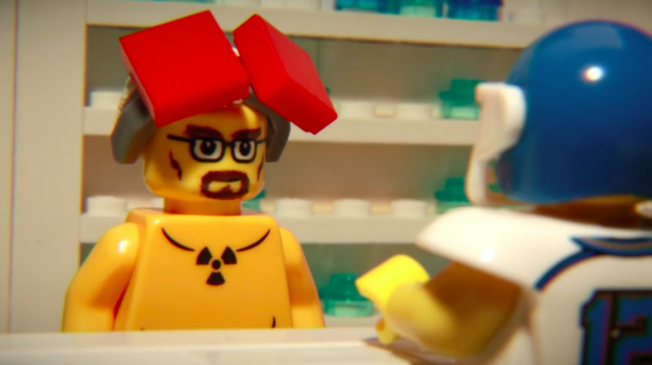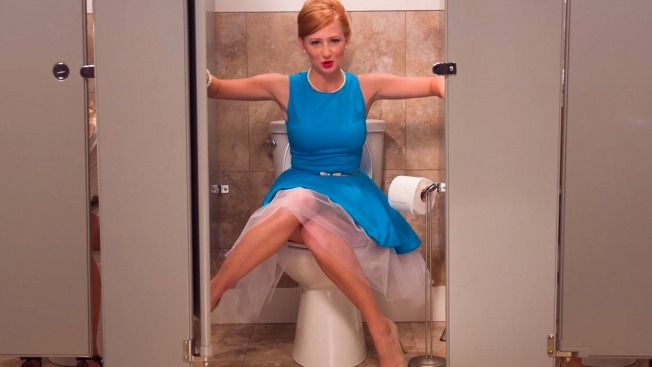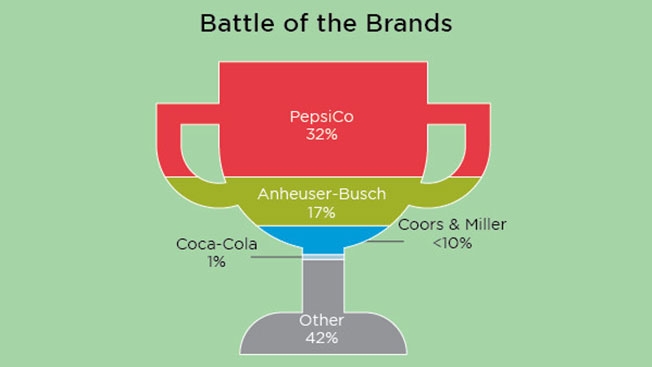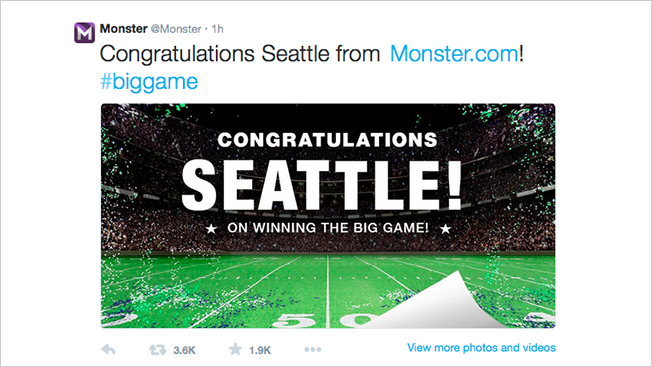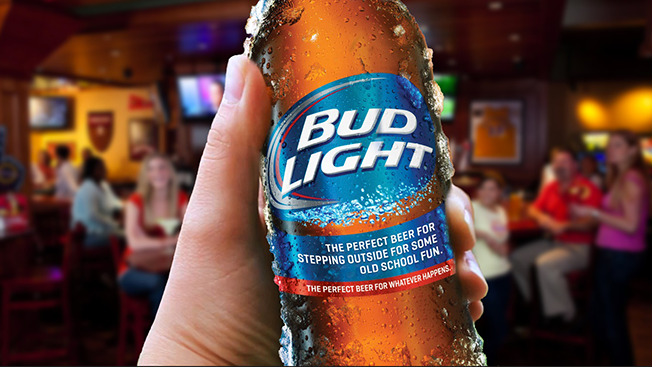
This year's Super Bowl showed a new group of advertisers—mobile games—aiming to take over the world's biggest marketing event. And while it's easy to chalk up these companies' TV investments to big marketing budgets, (Machine Zone's Game of War: Fire Age reportedly launched a campaign with Kate Upton in November backed by $40 million in media) it's part of a more interesting trend that's shaking up technology and digital brands.
Three mobile games—Game of War, Heroes Charge and Clash of Clans—ran in-game ads during this weekend's Super Bowl broadcast, suggesting that brands are ditching their gamer reputations to become mainstream forms of entertainment.
But without the established brand awareness that Big Game staples have in categories like automotive and food and beverage (think Budweiser and Ford), it's unclear if viewers will actually remember this year's new crop of mobile game advertisers now that the game is over.
"It reminds me of GoDaddy—do people know what domains are [and] do people know what hosting is? I would expect no," said Tuong Huy Nguyen, a principal research analyst at Gartner. "But, on the flip side, it says something about where gaming has gotten to today. It truly has become much more mass market, it's not just what 18- to 32-year-old males do."
To Nguyen's point, GoDaddy ran its 11th Super Bowl ad this year but only in recent years has started to downplay its notoriously scandalous ads to focus on the company's products. That strategy ended up blowing up in the company's face when it pulled this year's ad at the last minute after complaints about the spot's references to puppy mills.
TV-Heavy Budgets
Out of the three mobile gaming brands promoted on TV Sunday night, uCool's ad for Heroes Charge is perhaps the smallest name. The brand ran a 15-second promo during the fourth quarter of the game that showed a scene from the game. A call to action at the end of the ad promoted viewers to download the app.
After launching in October last year, Heroes Charge began running TV ads. Based on those results, the brand is now allocating 75 percent of its marketing spend to TV while 25 percent goes to digital. While the numbers bode well for traditional advertising, a 30-second Super Bowl ad cost a reported $4.5 million this year.
"Through television, we're seeing a ten-fold growth in our player volume, and with more than one million apps for players to choose to engage with, it's really increased the cost to market in what is now an overly saturated area," said Benjamin Gifford, vp of user experience for Heroes Charge studio uCool.
Meanwhile, Game of War ran a 30-second ad that showed Upton in reenacted scenes from the game. The goal, of course, is that Upton's image will resonate with a larger group of Americans that aren't necessarily gamers. "It ties into that mass-market appeal," Gartner's Nguyen said. "[But] I'm going to say I'm skeptical of how successful that would be."
Mobile gaming company Supercell and agency Barton F. Graf 9000 also leaned on a celebrity—Liam Neeson—to promote its Clash of Clans game.
By the Numbers
Data from iSpot.tv tracked how many times each of the commercials were viewed on Facebook and YouTube and shared on social media. Heroes Charge's 15-second ad generated an estimated 46,715 earned Facebook and YouTube views and 702 social actions. Game of War's spot drove 915,799 views and 14,908 shares. And Clash of Clans raked in 3,078 views and 71,116 social actions.
Despite the low number of views, the data shows that Clash of Clans' ad was one of the buzziest brands on Twitter Sunday night.
Findings from social firm NetBase back up iSpot.tv's data. NetBase measured social media sentiment, emotions and mentions to compile a list of the top 10 buzzy Super Bowl brands. Clash of Clans took the No. 9 spot and is the only tech name on the chart. Longtime Super Bowl favorites McDonald's, Budweiser and Coca-Cola also ranked on the list.
Beyond the data, Derek Rucker, professor of marketing at Northwestern University's Kellogg School of Management, pointed out that Clash of Clans' promo may have struck a chord with Super Bowl viewers because the game itself fit into a bigger plot line.
"It wasn't just the use of Liam Neeson—it was the story they were telling," Rucker said. During the 30-second spot, Neeson is seen losing a game while waiting for his order at a coffee shop, which then triggers him to seek revenge against his opponent. "You will regret the day you crossed AngryNeeson52," he says at the end of the commercial.
Compared to the other two Super Bowl mobile game ads, what makes the Clash of Clans promo stand out is how it mixes scenes from the game with the actor's monologue.
"If you're going to advertise for this massive audience, one thing to think of is how do you maximize your investment," Rucker explained. "Part of that is that you should show up with creative worthy of the Super Bowl."


